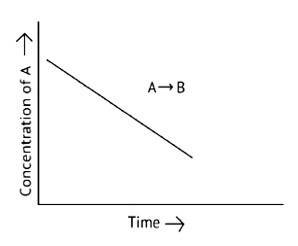Chemical Kinetics
Get insights from 144 questions on Chemical Kinetics, answered by students, alumni, and experts. You may also ask and answer any question you like about Chemical Kinetics
Follow Ask QuestionQuestions
Discussions
Active Users
Followers
New answer posted
5 months agoContributor-Level 10
This is a Short Answer Type Question as classified in NCERT Exemplar
The pace of any reaction is determined by the concentration of the reactants, the rate of any reaction generally declines during the reaction. As the reaction progresses, the reactant concentration declines, and the product concentration rises.
New answer posted
5 months agoContributor-Level 10
This is a Short Answer Type Question as classified in NCERT Exemplar
The chance of more than three molecules meeting at the same time is extremely minimal, reactions with molecularity more than three are extremely rare. Simultaneous collisions decrease as the number grows, the probability is very low, and more than three reactions with molecularity are uncommon.
New answer posted
5 months agoContributor-Level 10
This is a Short Answer Type Question as classified in NCERT Exemplar
The activation energy for fuel combustion reactions is very large, and because every substance or element requires an ignition temperature to function and excite to a higher temperature, oxygen in air does not combust to fire.
New answer posted
5 months agoContributor-Level 10
This is a Short Answer Type Question as classified in NCERT Exemplar
The energy possessed by the reacting species increases as the temperature rises, the pace of a reaction increases. This raises the temperature and raises the average kinetic energy of the reactant molecules
New answer posted
5 months agoContributor-Level 10
This is a Short Answer Type Question as classified in NCERT Exemplar
The reaction's activation energy is relatively high at room temperature and not readily available, the reaction is highly viable. H2 (g) and O2 (g)bond break and clash, allowing particles to pass across the energy barrier.
2H2 + O2→2H2O
Because of the large activation energy, the water molecule does not form in this equation.
New answer posted
5 months agoContributor-Level 10
This is a Short Answer Type Question as classified in NCERT Exemplar
A. The reaction has a zero order. The concentration of the reactants does not change with time in a zero order reaction, and the rate of concentration remains constant
B. Slope of the curve is - k
C. The rate constant's units are molL 1s - 1
New question posted
5 months agoNew answer posted
5 months agoContributor-Level 10
This is a Short Answer Type Question as classified in NCERT Exemplar
The concentration of the reactants does not change with time in a zero -order reaction, and the rate of concentration remains constant. The molecularity of a reaction cannot be 0 because it indicates the number of reactants involved.
New answer posted
5 months agoContributor-Level 10
This is a Short Answer Type Question as classified in NCERT Exemplar
When the Threshold energy is less than the energy of the molecules and the orientation of the molecules is proper for the effective collision, the reaction happens. As a result, the reaction is slow, and the number of effective collisions is reduced
New answer posted
5 months agoContributor-Level 10
This is a Short Answer Type Question as classified in NCERT Exemplar
The number of ions or atoms that collide to react is known as molecularity in an elementary reaction. The order of reaction about B should be 1 if this is an elementary reaction, however the rate law given is
Taking an Exam? Selecting a College?
Get authentic answers from experts, students and alumni that you won't find anywhere else
Sign Up on ShikshaOn Shiksha, get access to
- 65k Colleges
- 1.2k Exams
- 681k Reviews
- 1800k Answers

